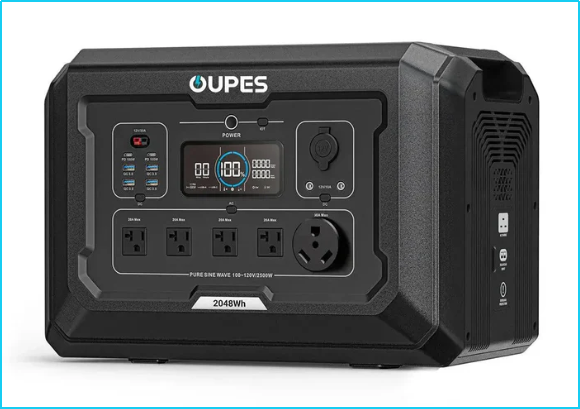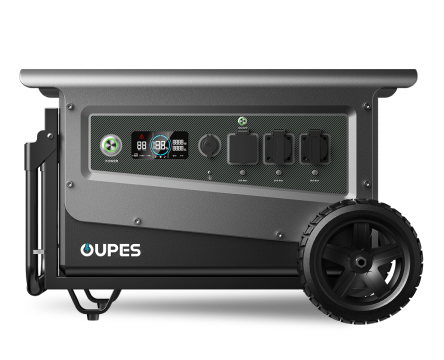
Table of Contents
- Introduction: Why Battery Longevity Matters
- Understanding Rechargeable Battery Types
- Factors That Affect Battery Lifespan
- Optimal Charging Practices
- Proper Battery Storage Methods
- Temperature Management
- Maintenance and Calibration
- Comparison Table: Common Rechargeable Battery Types
- Battery Care in Solar Generators and Portable Power Stations
- When and How to Recycle Old Batteries
- FAQ
Introduction: Why Battery Longevity Matters
Rechargeable batteries are the backbone of modern technology — from smartphones and laptops to solar generators and portable power stations. Their performance and lifespan directly affect how reliably we can access energy, whether at home, outdoors, or during emergencies.
According to the U.S. Department of Energy, battery degradation typically begins after several hundred charge cycles, depending on chemistry and usage habits. By understanding proper care techniques, you can extend battery lifespan by up to 50%, saving money and reducing environmental waste.
Understanding Rechargeable Battery Types
Different rechargeable battery chemistries have distinct characteristics, lifespans, and maintenance needs. The most common types include lithium-ion, lithium iron phosphate (LiFePO₄), nickel-metal hydride (NiMH), and lead-acid batteries.
1. Lithium-Ion (Li-ion)
Lithium-ion batteries are widely used in electronics due to their high energy density and efficiency. However, they degrade faster when exposed to high temperatures or kept at full charge for extended periods.
2. Lithium Iron Phosphate (LiFePO₄)
Used in many modern portable power stations like those from OUPES, LiFePO₄ batteries are known for safety, longevity, and stability. They can last over 3,000–5,000 charge cycles with minimal capacity loss — much higher than standard lithium-ion batteries.
3. Nickel-Metal Hydride (NiMH)
NiMH batteries are durable and often used in household electronics. However, they self-discharge faster and require periodic full discharges to maintain performance.
4. Lead-Acid
Commonly found in automotive and stationary backup systems, lead-acid batteries are inexpensive but heavy and require careful maintenance to prevent sulfation and water loss.
Factors That Affect Battery Lifespan
1. Charge/Discharge Cycles
Each time a battery is charged and discharged counts as one cycle. Most lithium-ion batteries last between 500 and 1,000 cycles, while LiFePO₄ batteries can exceed 3,000. Frequent deep discharges can shorten lifespan.
2. Depth of Discharge (DoD)
DoD refers to how much of a battery’s total capacity is used before recharging. Keeping discharge below 80% greatly extends battery life.
3. Overcharging and Over-Discharging
Overcharging causes heat and stress, while deep discharging can permanently damage battery cells. Smart battery management systems (BMS) — commonly used in solar generators — help prevent these issues.
4. Temperature Exposure
Extreme heat accelerates chemical degradation, while extreme cold reduces performance. Ideally, rechargeable batteries should be operated between 15°C and 30°C (59°F–86°F).
Optimal Charging Practices
1. Avoid Full 100% Charges Regularly
Keeping lithium batteries at full capacity increases stress on cells. Charging to about 80–90% for daily use helps reduce wear.
2. Avoid Full Discharges
Don’t wait until your battery is completely empty to recharge. Keeping the charge level between 20–80% ensures longer lifespan.
3. Use the Right Charger
Always use manufacturer-approved chargers. Incorrect voltage or current can damage cells and shorten overall life.
4. Charge at Moderate Temperatures
Charging batteries in extreme heat or cold can harm internal chemistry. Allow devices to return to room temperature before recharging.
Proper Battery Storage Methods
1. Ideal Charge Level for Storage
Store batteries at around 50–60% charge to prevent capacity loss over time. Storing them fully charged or completely drained accelerates degradation.
2. Avoid High Humidity
Humidity can cause corrosion on battery terminals. Store in a cool, dry environment with 30–50% humidity.
3. Long-Term Storage Practices
If storing for months, check and recharge the battery every 3–6 months to maintain health.
Temperature Management
1. Avoid Heat Exposure
According to National Renewable Energy Laboratory (NREL) research, battery capacity can decline up to 20% faster when exposed to high temperatures over time. Keep devices away from direct sunlight and enclosed spaces like cars.
2. Cold Weather Considerations
In cold environments, battery performance temporarily drops but usually recovers once warmed. For outdoor gear or solar generators, consider insulated covers or battery warmers.
Maintenance and Calibration
1. Periodic Calibration
For devices with battery gauges, fully charge and discharge the battery once every few months to recalibrate the indicator. This ensures accurate readings of remaining capacity.
2. Clean Battery Contacts
Dust and corrosion reduce conductivity. Use a dry cloth or isopropyl alcohol to clean metal terminals regularly.
3. Use Regularly
Idle batteries degrade faster than those in use. If possible, discharge and recharge stored batteries every few weeks to keep ions active.
Comparison Table: Common Rechargeable Battery Types
| Battery Type | Typical Lifespan (Charge Cycles) | Energy Density | Maintenance | Environmental Impact | Best Use Case |
|---|---|---|---|---|---|
| Lithium-Ion | 500–1,000 | High | Low | Moderate | Electronics, small devices |
| LiFePO₄ | 3,000–5,000 | Medium | Low | Low | Solar generators, power stations |
| NiMH | 500–1,000 | Medium | Moderate | Low | Household electronics |
| Lead-Acid | 300–500 | Low | High | High | Automotive, backup systems |
Battery Care in Solar Generators and Portable Power Stations
Solar generators and portable power stations rely heavily on battery health for efficiency and reliability. Most modern units use LiFePO₄ batteries, known for safety and longevity. Here are some key care tips:
- Keep the unit in a shaded, well-ventilated area during solar charging.
- Do not overuse DC and AC outputs simultaneously for extended hours.
- Use solar panels with correct voltage input to avoid overcharging.
- Recharge the unit every 3–6 months during storage.
For example, OUPES portable power stations use smart Battery Management Systems (BMS) to automatically regulate charging, discharging, and temperature — ensuring optimal battery life.
When and How to Recycle Old Batteries
When rechargeable batteries can no longer hold a charge, recycling is the safest and most eco-friendly disposal method. According to the U.S. Environmental Protection Agency (EPA), improper disposal of batteries can lead to soil and groundwater contamination due to heavy metals.
Recycling Tips
- Use certified battery recycling centers or programs (e.g., Call2Recycle).
- Do not throw batteries in household trash.
- Tape terminals before disposal to prevent short circuits.
FAQ
1. How long do LiFePO₄ batteries last?
LiFePO₄ batteries typically last 10–15 years or up to 5,000 charge cycles, depending on usage and care.
2. Is it bad to charge batteries overnight?
Not necessarily, but prolonged overcharging generates heat and stress. Smart chargers and devices with BMS can safely manage overnight charging.
3. What’s the best charging percentage for daily use?
Maintaining the charge between 20% and 80% is ideal for lithium-based batteries.
4. How do I know if my battery is degrading?
Reduced run time, overheating, or slower charging are common indicators of battery wear.
5. Can I use solar panels to recharge portable batteries?
Yes. Using properly rated solar panels is an excellent, eco-friendly way to recharge batteries and extend their usable lifespan.




























